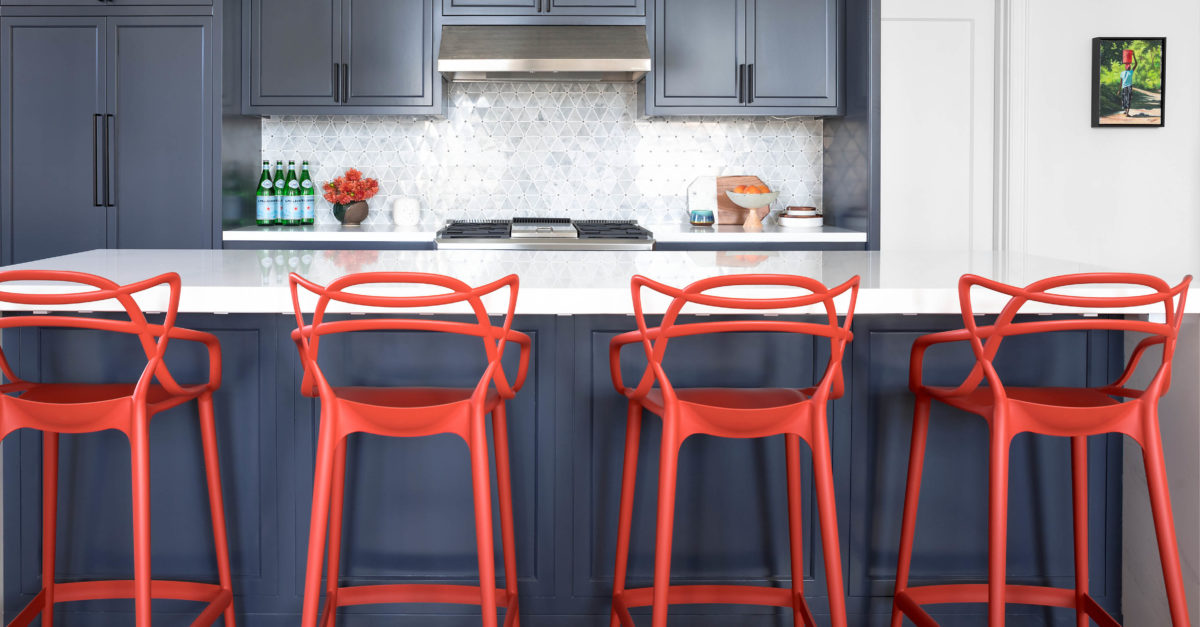The Case for Good Design
Photography by the IT factory.
Oakland resident Kelly Finley transmuted her experience and skills as a corporate litigator into a thriving career as an interior designer and founder of Joy Street Design, carving out a signature style of bold colors and patterns along the way.
Your path to design took an unconventional route. Will you take us through your education journey?
I went to college to become an engineer. My first major was math and computer science. After a few years of coding in a lab, I realized that I needed a more social outlet and switched my major to information technology in the business school. This major allowed me to engage in the IT side of things but also use other skills and have more fun.
After moving to Manhattan, I worked as a fundraiser for a nonprofit organization. I realized many of the successful people that I met had law degrees. I decided to take the LSAT and got into Stanford Law School. I moved to California without any intention of ever practicing law, but I truly enjoyed the adversarial process and the way lawyers think. I graduated, clerked for a district judge, and became a corporate litigator.
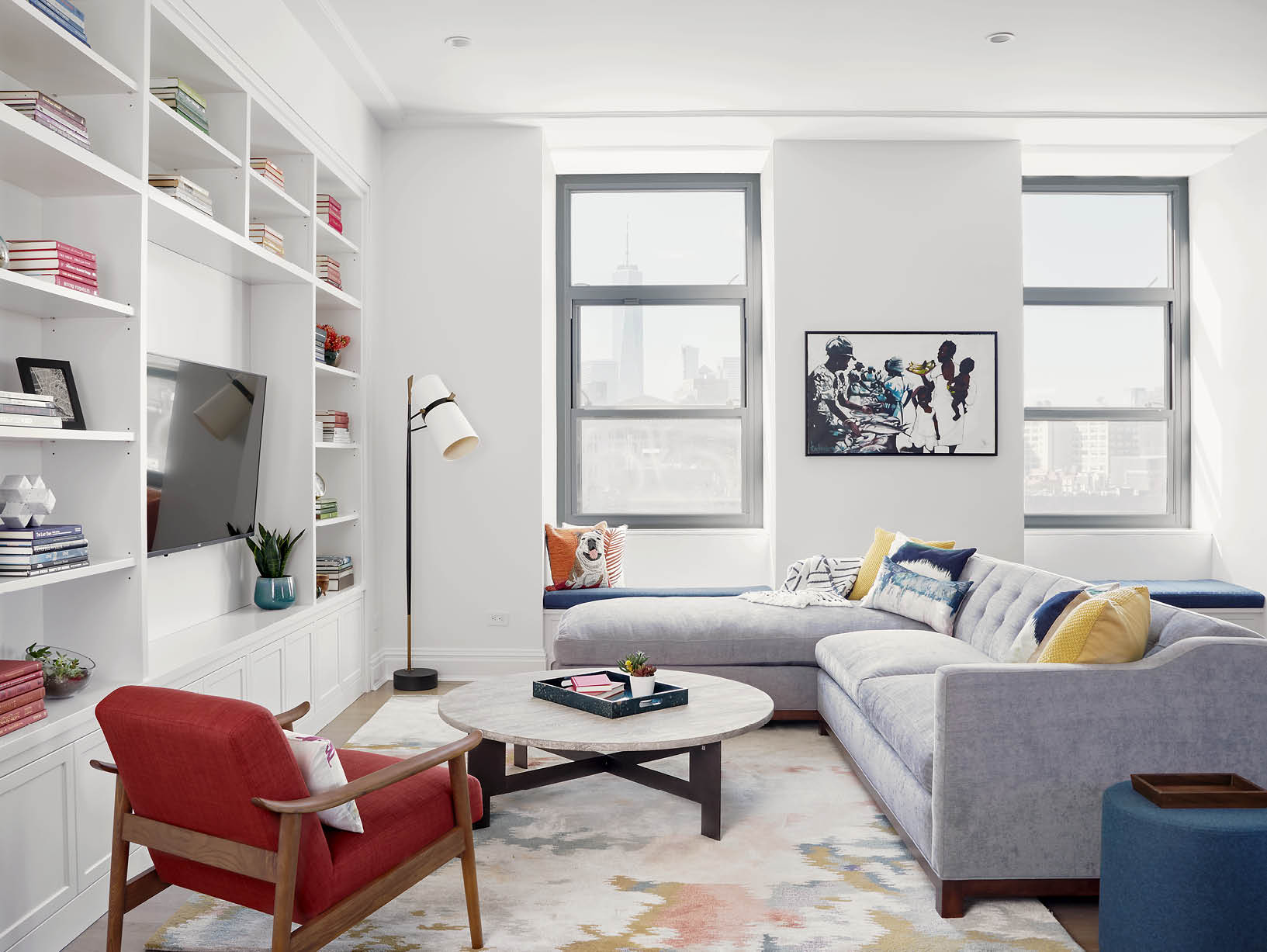
Did you work in that profession for long? What prompted the career switch?
I worked as a litigation attorney at a large law firm in San Francisco for six years. About four years in, I realized that I needed a creative outlet to balance the crazy workload. I began taking an evening class in drafting and fell in love with the subject. For the next two years, I worked during the day and took drafting classes in the evening, often pulling all-nighters to get a homework assignment done after writing legal briefs. I started doing projects on the side, and when a move to Los Angeles required me to look for another job, I decided to go out on my own and try interior design as a career. My first clients were my attorney colleagues and friends who believed in my ability to do anything with a certain level of professionalism and grit.
How has your law career helped in your design career?
While most people think that interior design is about decorating and making spaces pretty, that is actually only about 15 to 20 percent of what happens daily. At Joy Street Design, we often stress that, while we make very pretty rooms, we are superb project managers that provide great service to our clients as they go through the often difficult process of renovating and decorating. I use some element of my previous experience every day.
How would you describe your design style? What influences or inspirations have shaped this style?
My design style is simple, modern, and colorful. I love clean lines and simple silhouettes, but I also always need to have something that is very colorful. I have no desire to live in a black-and-white world (in any capacity) and seek to infuse color and fun in all aspects of my life. My cultural background and childhood memories shape my style. As a Black child in Chicago, I grew up in a house full of color, art, and, vibrancy. I don’t think I had ever been in a room that was all white before moving to college. The idea that color equals joy and happiness was ingrained in me from an early age.
As I’ve gotten older, I continue to be inspired by how people live everywhere—in another city, in another country, or on my block. I love to see the creative ways people solve a problem. Traveling to foreign countries—especially where people live very differently than we do in the United States—helps me think outside the box.
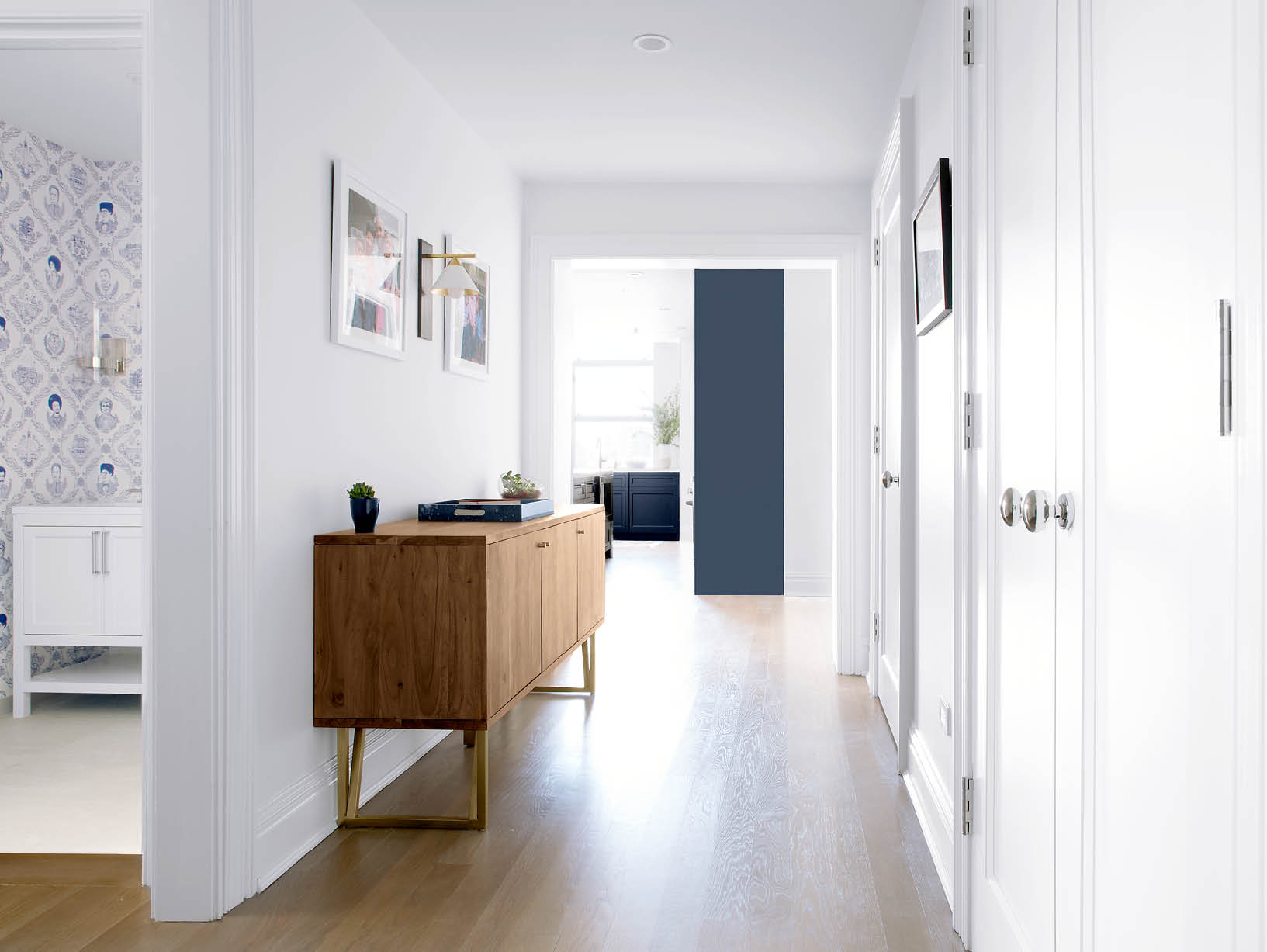
What is your biggest design pet peeve?
Pretty interiors that say nothing persona about the space—for example, no special art that was purchased on a trip, no odd thing on the bookcase that the client can’t part with. Now more than ever, home is about safety and security from the outside world and having your own personality reflected in the things around you is important.
Tell us about the New York Condo project:
The project was for a repeat client that moved to New York City from Oakland. We took a dated condo and updated it to fit the lifestyle of a modern family. It was a great exercise in making spaces work better while also infusing personality into them.
Let’s talk about those colorful barstools. Were they chosen before or after the rest of the kitchen design?
The barstools were chosen after the bones of the kitchen were finalized. We like to keep the elements that are hard to change relatively neutral. In this case, we went with a gorgeous deep navy blue cabinet and added white quartz countertops and a marble mosaic backsplash. This foundation is great and classic but also not terribly interesting. The barstools brought in that little bit of whimsy with the shape, and the bold orange color made the entire space come alive.

You used a very similar color palette throughout the whole space. What was the strategy behind that?
We wanted the house to tell a story and make sense together. It didn’t need to match, but considering the smaller size of the condo, we didn’t want someone to walk into one room and be surprised by what was happening down the hall. The bathroom wallpaper is so much fun.
Will you talk about that design choice?
In a powder room, you can pack a stronger punch because no one stays in the room for long periods of time. The wallpaper (available from Flavor Paper) represents different artists and luminaries in the Bay Area, which is a fitting nod to the place they had called home. It’s one of my favorite features in this room.
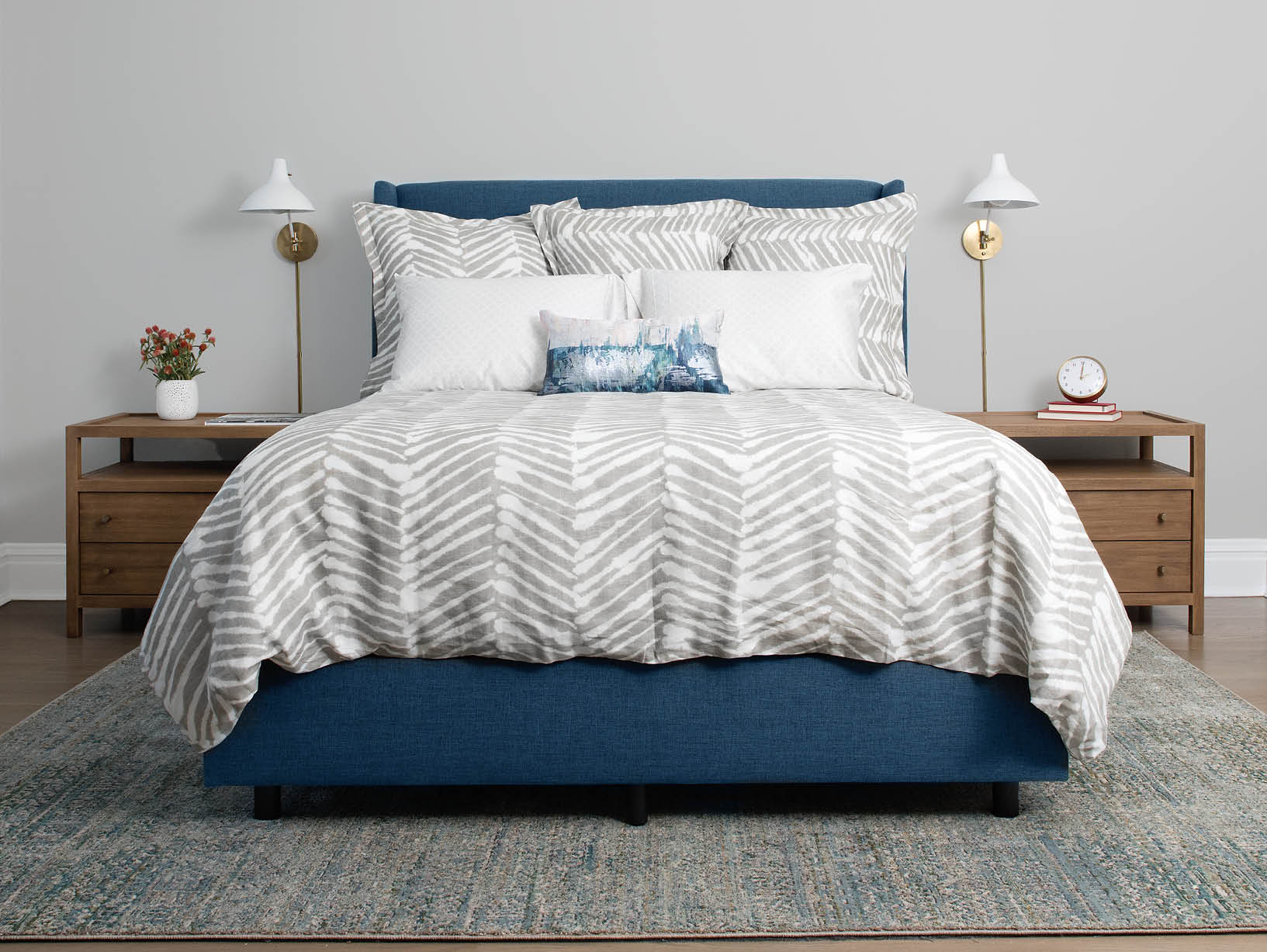
The lighting choices are all art pieces in their own right. Would you say lighting is a hallmark of your design style?
Lighting is the jewelry in the room. You might have on a lovely tailored suit, but if you aren’t wearing earrings or a necklace, it falls flat. I consider lighting to be that element that takes a room to the next level.
What are some tips you have for creating vignettes on built-in shelving or coffee tables?
Styling a coffee table or shelf is an art but not one that is easily learned. The goal is to create movement that allows the eyes to continue to explore the space. Vary the height of items, group items in odd numbers, and have fun by adding the things you love. You can always edit, but you’ll be happy that you get to share those cherished items with others.
How would you describe your personality?
I work off the motto of “work hard, play hard.” I am no nonsense and serious when I need to be for work and can hold my ground with anyone. I love systems and order. I’ve never met a to-do list I didn’t want to tackle. But when work is over or humming along, I am just as silly and talkative as my seven-year-old daughter.
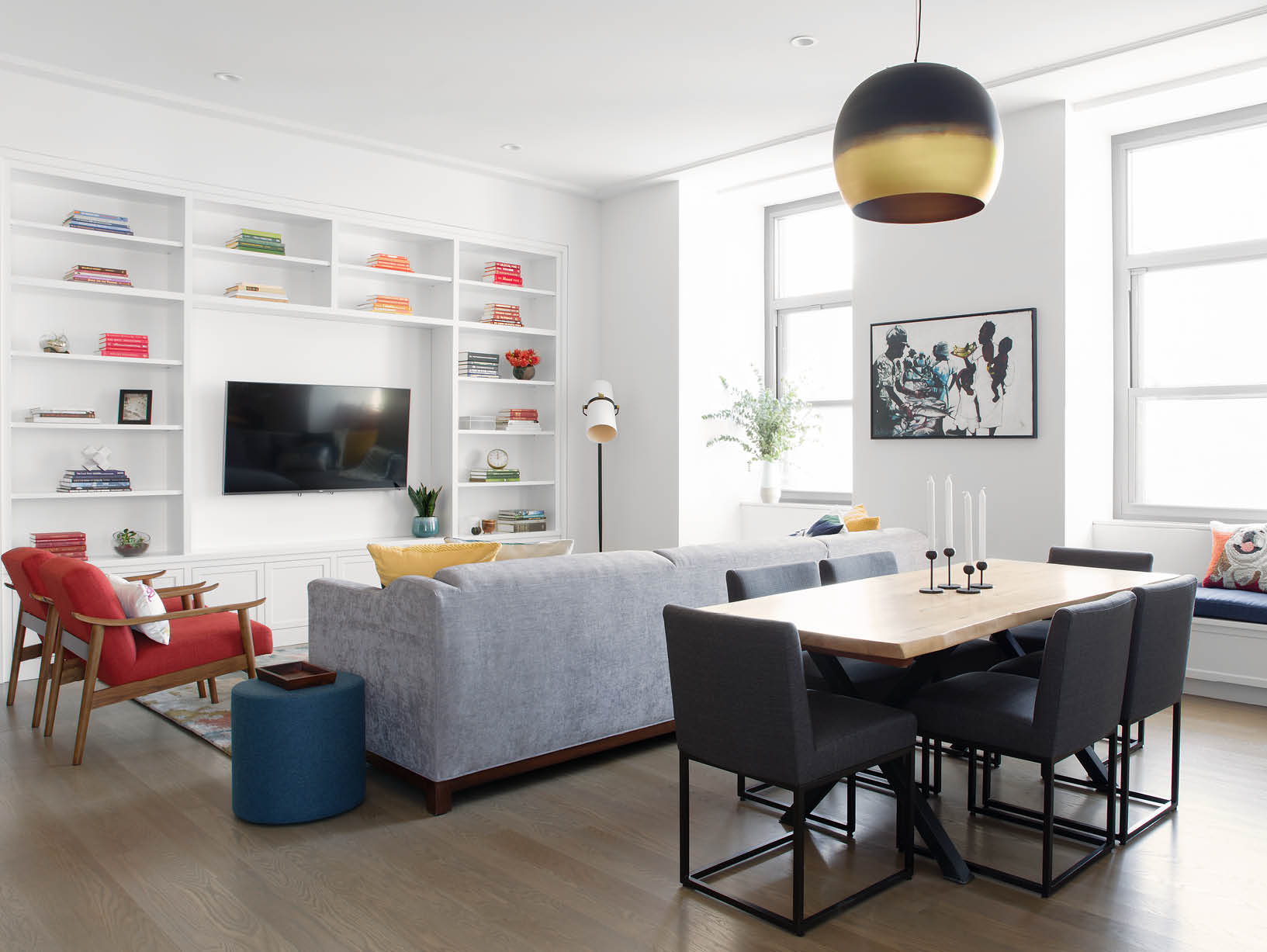
Do you feel at home in Oakland? What is it about that city that resonates with you?
I’ve been in the Bay Area for over eighteen years. I’ve been in Oakland for six years, and I consider this home. It’s such a vibrant and diverse community that has embraced our family and my business. I love the thriving Black community in the city and how the area is growing in a variety of ways. I also serve on the board of the Oakland Museum of California and am actively involved in other organizations in the city.
Are there other careers that you think you’d like to try out?
I would love to get involved in real estate development to create homes based on the Joy Street brand and lifestyle. I have a strong point of view on how homes should flow, and I’d love to be present at the beginning of a project to provide that insight on structure optimization.
What have you been inspired by recently?
I believe home is vitally important to our happiness and peace of mind. I started a nonprofit organization, Joy Street Initiative, that is dedicated to improving lives through the transformation of spaces for those who are less house-secure. Ten percent of Joy Street Design’s profits is donated to Joy Street Initiative to renovate and decorate women’s shelters in the Bay Area. I believe that restoring dignity and ownership in these spaces is extremely important, especially as people transition out of hardship or trauma. It is rewarding to do this work and fund it with the interior design work that we love to do for our clients.
For more info, visit joystreetdesign.com















